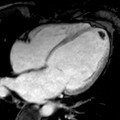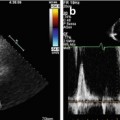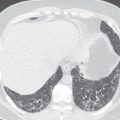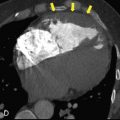Placing dental implants can be hard without clear images of the area. Cone beam CT scans are now the standard for checking bone and planning safe implant placement.
Find out how better imaging leads to safer, more predictable results.
Importance of Radiology in Implant Dentistry
Radiology guides every step of implant planning. Cone beam computed tomography (CBCT) stands as the professional standard for diagnosis and preoperative treatment planning in implant dentistry.
CBCT gives clear 3D dental images that help assess bone height, width, and shape. Dentists use this data to check if the bone is dense enough for an implant or if a bone graft is needed.
Studies show CBCT scans give low radiation exposure, making them safe for routine use. The ability to see detailed images of anatomic structures supports better implant positioning and reduces surgical risks.
CBCT also helps dentists handle difficult cases and spot complications. Dentists use these scans to check postoperative neurosensory impairment and acute rhino-sinusitis. For high-difficulty cases, CBCT guides endodontic decisions.
Many dental professionals rely on CBCT interpretation PDFs and resources to improve their understanding. Cost and the availability of CBCT facilities matter to dentists and patients as well.
“CBCT has become essential in implant dentistry, giving us the detailed images we need for safe and precise treatment plans,” says Seattle cosmetic dentist Dr. McKay.
Pre-Operative Planning in Implant Dentistry
Pre-operative planning is crucial for successful implant dentistry. It ensures the right assessment of the surgical site and helps avoid complications during surgery.
Role of radiological imaging in site assessment
Radiological imaging, especially cone beam computed tomography (CBCT), gives clear 3D views of the proposed implant site. CBCT has become the professional standard of care for diagnosis and treatment planning in implant dentistry.
Dentists can measure bone height, width, and shape with accuracy using CBCT data. This helps to decide if the bone is dense enough or if bone grafting is needed before placing dental implants.
CBCT scans expose patients to relatively low radiation and offer more detail than traditional imaging.
CBCT also shows the location of important anatomic structures such as nerves and sinuses, reducing the risk of surgical complications. Diagnostic imaging uncovers hidden issues that may affect implant placement and long-term success.
Dental professionals can use resources, such as CBCT interpretation PDFs, to enhance their understanding and accuracy in site assessment. The detailed radiographic assessment supports safer and more predictable outcomes for patients seeking dental implants.
Evaluation of bone quality and quantity
Cone Beam CT is now the professional standard for radiographic assessment of bone in implant dentistry. CBCT gives clear 3D dental imaging, which helps dentists measure bone height, width, and shape before placing dental implants.
This tool can show if the bone is dense enough or if a patient needs bone grafting first. Compared to traditional imaging techniques, CBCT offers more accuracy in evaluating surgical site analysis.
CBCT scans provide low radiation exposure while delivering detailed images for implant planning and preoperative evaluation. Dentists use this diagnostic radiology method during preoperative assessment to check both quality and quantity of available bone.
Clear radiographic evaluation with CBCT improves treatment planning and helps reduce risks during surgery.
CBCT imaging has truly set new standards in preoperative evaluation by ensuring both precision and safety for our patients.
Identification of anatomical landmarks and critical structures
Identifying anatomical landmarks is vital in implant dentistry. Accurate imaging helps locate important structures like nerves and sinuses. CBCT scans play a key role in this step.
They provide 3D images of the jaw, showing bone height, width, and shape.
These details guide treatment planning. For example, they reveal if the bone can support an implant or if grafting is needed. Understanding these landmarks reduces risks during surgery and improves outcomes for patients.
Regular use of diagnostic imaging enhances confidence in placing dental implants effectively.
CBCT Interpretation for Implant Treatment Planning
CBCT helps dentists see the jaw in detail for better implant planning. It shows bone structure, density, and other key features clearly. With this imaging, clinicians can place implants more accurately.
Understanding CBCT data is crucial for successful outcomes in treatment. Explore how CBCT shapes your implant approach!
Advantages of CBCT over traditional imaging
CBCT offers many benefits compared to traditional imaging. It provides detailed 3D images of the dental structures. This clarity helps assess bone height, width, and shape accurately.
Dentists can see if the bone is dense enough to support an implant or if grafting is needed.
Radiation exposure from CBCT scans is low. This makes them safe for routine pre-implant assessments. Many dental professionals use CBCT as a standard in diagnosing and planning treatment for implants.
The ability to visualize anatomical structures clearly aids in avoiding critical areas during procedures. These advantages make CBCT a vital tool in implant dentistry.
Steps for systematic CBCT data analysis
After discussing the advantages of CBCT over traditional imaging, it is crucial to highlight how to analyze its data effectively. Proper analysis helps in treatment planning and improves patient outcomes.
- Begin with image acquisition. Ensure proper positioning and settings during the scan for optimal results. Quality images are vital for accurate interpretation.
- Load the CBCT images into specialized software. This software can help visualize 3D reconstructions of the scanned area.
- Review bone quality and quantity first. Look for density variations that indicate if bone grafting may be necessary.
- Identify critical anatomical landmarks next. Structures like sinuses or nerves should be noted to avoid complications during implant placement.
- Assess potential implant sites carefully. Evaluate the height, width, and shape of these areas to ensure they can support a dental implant.
- Check for any anatomical variations in the patient’s oral structure. Recognizing unique features can guide surgical planning and improve success rates.
- Document findings thoroughly after reviewing all relevant areas and structures noted on the scans.
- Collaborate with colleagues as needed based on your findings from the analysis, especially in complex cases or complications observed postoperatively.
- Use periodic imaging for follow-up assessments after surgery to monitor implant stability and integration over time.
- Stay updated with resources related to CBCT interpretation, which can enhance understanding and improve practical application in everyday practice.
Assessing implant placement sites using CBCT
After completing the steps for systematic CBCT data analysis, focus on assessing implant placement sites. CBCT provides 3D images that show bone quality, height, and width in detail.
This imaging helps determine if the bone can support an implant or if grafting is necessary.
The low radiation exposure from CBCT makes it a safe choice for routine assessments before surgery. Dentists rely on this technology to find anatomical landmarks and avoid critical structures during placement.
Clear visualization of these factors plays a vital role in successful implant outcomes.
Identifying variations in anatomy
Identifying variations in anatomy is key for successful implant planning. Cone beam computed tomography (CBCT) helps reveal detailed 3D images of the bone structure. It shows if the bone is dense enough to support an implant or if grafting is necessary.
Understanding these details aids in making informed decisions.
Variations like the shape and height of bones can affect where implants are placed. CBCT scans allow dentists to assess these aspects accurately. They influence treatment outcomes significantly, especially in complex cases.
Evaluating anatomical structures with precision enhances safety during procedures and promotes better long-term results for patients.
Use of Radiological Guides and Templates
Radiological guides and templates help improve the accuracy of implant placement. They provide a clear pathway for surgeons, making the process smoother and more predictable.
Acrylic stents for guided surgery
Acrylic stents assist in guided surgery for dental implants. They provide a clear roadmap for precise implant placement. Using these stents improves accuracy during the procedure. Dentists can better assess the surgical site using radiological imaging before applying them.
These guides are useful for evaluating bone quality and quantity. They ensure that the implant is placed in an optimal position, minimizing mistakes. Some patients may need bone grafting if their bone is not dense enough to support an implant.
Acrylic stents contribute to achieving successful treatment outcomes by improving safety and precision during surgery.
Benefits of surgical templates in implant placement
Surgical templates play a key role in implant placement. These guides enhance precision and improve outcomes.
- Surgical templates help ensure accurate implant positioning. They align the implants to the predetermined plan.
- Using templates reduces the risk of errors during surgery. This leads to fewer complications and better patient safety.
- Templates allow for a minimally invasive approach. They can decrease recovery time for patients.
- The use of surgical guides results in more predictable results. This can enhance patient satisfaction with their dental implants.
- Accurate placement from templates helps support effective bone integration. This is crucial for long-term success and stability of implants.
- Templates simplify complex cases, especially when anatomical structures are challenging to navigate.
- The cost of using surgical templates is often offset by the reduction in time and resources needed for corrections post-surgery.
- Patients benefit from less discomfort due to precise techniques guided by surgical templates.
Surgical templates are essential tools in implant dentistry that aid in planning and execution, ensuring better outcomes for both dentists and patients alike.
Post-Operative Radiological Follow-Up
Post-operative radiological follow-up is crucial for tracking the success of implants. Regular imaging helps spot any issues and ensures the implants are stable and well-integrated.
Monitoring implant stability and integration
Monitoring implant stability is key after surgery. It helps to ensure that the implant integrates well with the bone. Regular imaging, like CBCT scans, is important for this process.
These scans provide a clear view of the implant site and show how well the body accepts the new tooth.
Evaluating complications such as retrograde peri-implantitis also requires post-operative imaging. This condition can cause issues if not caught early. Periodic imaging allows dental professionals to track long-term success rates of implants.
Doing this improves treatment outcomes and patient satisfaction in implant dentistry.
Evaluating complications like retrograde peri-implantitis
Postoperative complications can arise after implant placement. Retrograde peri-implantitis is one such issue. This condition occurs when inflammation develops at the bottom of the dental implant.
It often results from infection spreading from surrounding tissues or roots.
CBCT plays a key role in evaluating retrograde peri-implantitis. It helps assess bone condition and detect any changes around the implant site. Regular imaging allows for early identification of issues, potentially improving treatment outcomes.
Dental professionals should prioritize postoperative assessments to ensure patient safety and long-term success with implants.
Importance of periodic imaging in long-term success
Periodic imaging plays a key role in the long-term success of dental implants. These scans help monitor implant stability and integration over time. Using cone beam computed tomography (CBCT) allows for detailed assessment of bone health, which is crucial after surgery.
This method also identifies complications like retrograde peri-implantitis early on.
Regular follow-up imaging ensures any issues are caught quickly. The low radiation exposure from CBCT makes it safe for routine checks. Continued use of diagnostic radiology can significantly improve treatment outcomes and patient care in implant dentistry.
Advantages and Limitations of CBCT in Implant Dentistry
CBCT offers clear images and improves safety in implant placement, but it raises concerns about radiation exposure. Dentists must weigh these benefits against the risks when planning treatments.
Read on to discover how to effectively use CBCT in your practice!
Enhanced precision and safety with CBCT
CBCT provides a high level of precision in implant dentistry. This imaging tool gives 3D views of dental structures. It reveals the height, width, and shape of bone accurately. Such detail helps dentists determine if the bone is dense enough for an implant or if grafting is necessary.
The radiation exposure from CBCT scans is low compared to other imaging methods. This makes it a safe choice for routine pre-implant assessments. Many professionals now use CBCT as the standard for diagnosis and treatment planning in this field.
Its ability to show critical anatomical landmarks enhances safety during procedures, reducing risks for patients.
Radiation dose concerns and mitigating risks
Radiation exposure is a valid concern with CBCT scans. Yet, the radiation dose from these scans is relatively low. This makes CBCT a safe option for routine pre-implant assessment.
Dentists should remain aware of patient safety while using this imaging tool.
To mitigate risks, always use CBCT only when necessary. It is essential to assess bone height, width, and shape before implant placement. Using protective measures can further reduce exposure during scans.
Regularly reviewing and updating protocols helps maintain patient safety in the practice as well.
Future Innovations in Radiology for Implant Dentistry
Future innovations in radiology will bring exciting changes to implant dentistry. Artificial intelligence may help improve the analysis of Cone Beam CT images. New imaging technology will likely increase accuracy in treatment plans.
These advancements can lead to better outcomes for patients and more precise implant placements. Stay tuned to learn how these trends might change your practice!
Integration of artificial intelligence in CBCT interpretation
Artificial intelligence (AI) enhances CBCT interpretation in implant dentistry. It assists in identifying important details quickly and accurately. AI can analyze bone density, shape, and other factors for improved treatment planning.
This technology aids dentists by providing clearer assessments of surgical sites.
Employing AI reduces human error and saves time during the evaluation process. The combination of AI with 3D imaging makes it easier to detect variations in anatomy that may affect implant placement.
Integrating artificial intelligence boosts diagnostic accuracy while using Cone Beam CT scans for preoperative assessments and postoperative evaluations.
Advancements in imaging technology for better accuracy
Recent advancements in imaging technology improve accuracy in implant dentistry. Cone beam computed tomography (CBCT) plays a key role in this progress. It is crucial for pre-implant planning, preoperative evaluation, and postsurgical assessment.
CBCT provides detailed 3D images that show the height, width, and shape of the bone. This helps dentists determine if the bone can support an implant or if additional procedures like bone grafting are needed.
The radiation exposure from CBCT scans is low compared to traditional methods. This makes it safer for routine assessments during treatment planning. Dental professionals now have access to PDFs about CBCT interpretation to expand their knowledge further.
Using these advanced imaging techniques enhances diagnostic capabilities and improves patient outcomes in implant dentistry.
Conclusion
Radiology plays a key role in implant dentistry. It helps dentists plan, place, and monitor dental implants effectively. The use of Cone Beam CT offers clear 3D images for better decision-making.
This technology improves safety and accuracy during treatment. Regular follow-ups with imaging ensure long-term success for patients.
Stay updated, free articles. Join our Telegram channel

Full access? Get Clinical Tree








